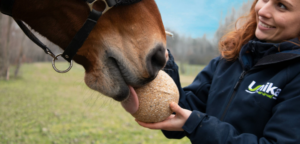
UNIKA BALLS: THE SUPPLEMENT THAT COMBINES FUN AND WELL-BEING
If you have ever walked through the stables or along…
Feed and products in 25kg bags excluded
Bank transfer | Paypal | Credit cards

The horse in America. The American continent also had its prehistoric horses long before the Conquistadors. Let’s follow the trail.
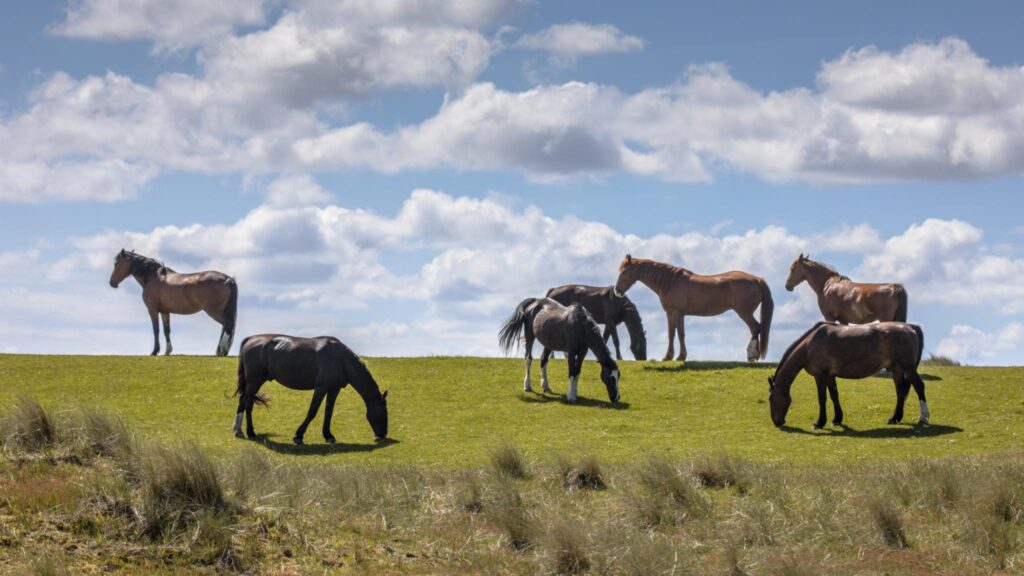
For the column “The horse in history: a fascinating journey,” we have chosen a slightly different, let’s say less Eurocentric view. We want to tell you about a time and place when the horse’s ancestors trod the American soil with their hoofless feet. So did these ancestors have strong, slender legs, long, thick manes in the wind, or a shiny, shaved coat, or an elongated muzzle with large eyes? None of this: the primordial horse had a short muzzle, small teeth, and was not strong enough to graze rough grasses. It was a little bigger than a cat, with short legs and four toes on each one: in short, more like Hi-Oh from Winnie the Pooh than Ribot. It appeared after the extinction of the dinosaurs, about 50 million years ago, and soon settled in very well with other equine animals in the mists of marshes and rainforests. Then, during the Miocene, the climate became drier and the swamps gave way to prairies. Then the Eohippus (as it was called) left the mists of the marshes and gradually appeared, sharper and sharper, in the new open spaces. In those spaces, he had to stretch his neck and snout to graze from the trees and could run through the open spaces: which then gave rise to the transformation of his snout, teeth, neck and paw that would then change into a hoof.
We have all studied the history of Europe. From this point of view, it would seem that the horse was introduced to America by Europeans, in particular by the Spanish conquistadors. All of us, at least once in our lives, have studied the incredible indigenous Americans, the so-called pre-Columbian peoples, when they saw those who would become their conquerors and exterminators on horseback. Imagine an Aztec trader climbing through a dense forest up the Sierra, dressed in hard agave clothing, who suddenly comes across a Spanish soldier on horseback. He would have seen a very tall, half-human creature with two heads. One, large and outstretched, covered with short, shiny fur, the other, a man. A man very different from him, with white skin, a full beard and, perhaps, blue eyes. The whole body of the creature glitters with an unusual grey material. Think of the surprise, dismay, mixed with fear, that he must have felt… This must have been the first encounter between an indigenous American and a Spanish knight. A meeting/clash because, shortly afterwards, these two civilisations, so different from each other as they have lived separately for centuries, will collide and the clash will be detonating. The horse was an animal they had never seen and was therefore interpreted as one with the rider. A kind of centaur who, seemingly a mythic creature to their eyes, appeared to them as being a divine entity. When the Spaniards arrived, the only large mammals on the entire American continent that could be partly domesticated were llamas and alpacas. As soon as this unknown, ‘anthropomorphic’ being began to shoot, they understood its destructive power, began to fear it and then to fight it.
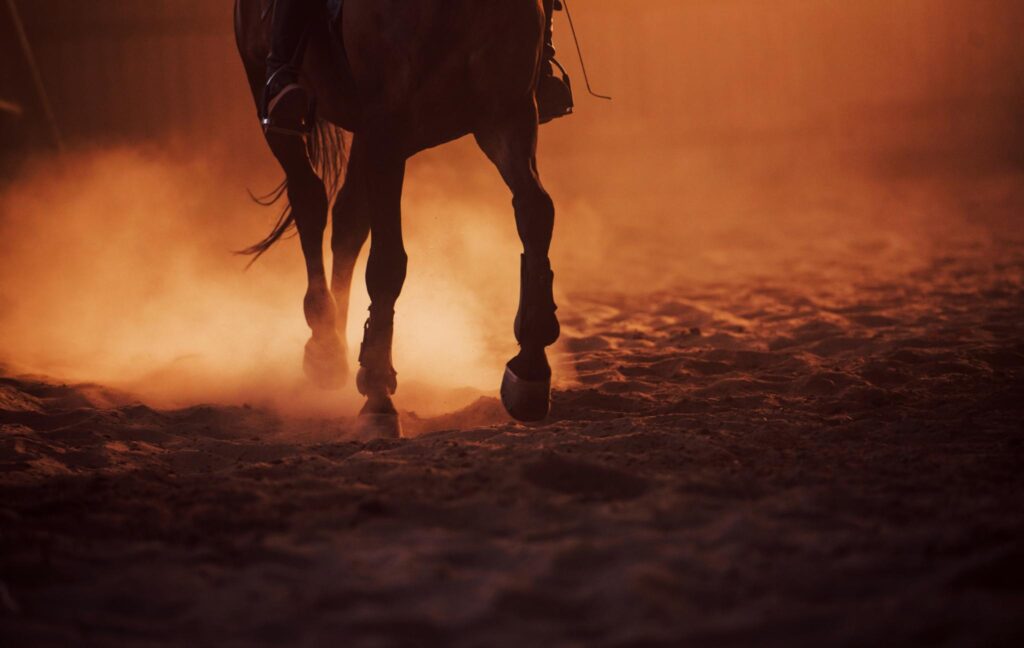
But did you know that the horse had already trodden the American soil long, long before the arrival of the Spanish? Many scholars even believe that the horse first appeared in North America, before moving on to Asia and Europe.
Let’s take another leap backwards and return to our horse’s ancestor on the American continent. When? Man already existed, but was not yet able to express himself in writing: we are, therefore, truly immersed in prehistoric times. The horse shared the prairie environment with mighty mammoths that had thick, long hair, huge bears and nervous rhinos. But it also shared it with fierce tigers that had very long tusks, and many wolves that would attack their prey in large packs. There were also long-haired bison and small animals such as beavers and foxes. The animals looked at each other with suspicion to see what fate awaited them at each encounter: that of the prey or that of the predator. All of them, however, bound by the same very thin thread, that of survival.
During the very long prehistoric times, men and horses had not yet made friends, but the latter were already galloping on American soil, which was well before the arrival of the Spaniards. The horses’ gaze in the open prairies could reach far into the distance, which allowed them to see the arrival of large tigers and armies of wolves, in time to flee and preserve their species.
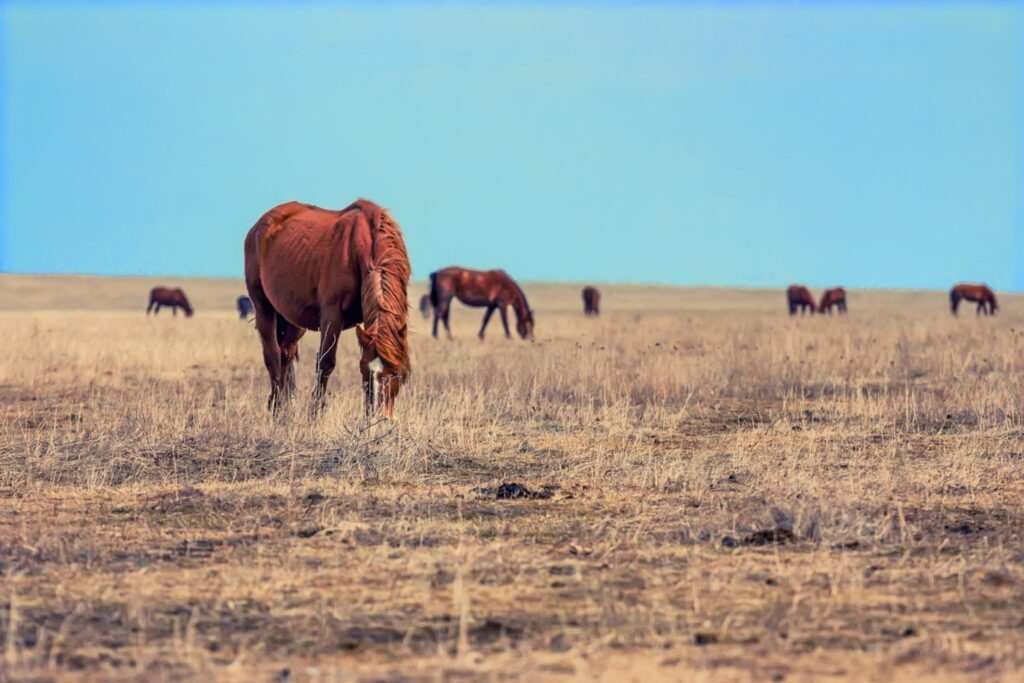
Then something happened: a few herds of horses began to move and, across the land bridge of the Bering Strait, they crossed the gateway to Asia. They entered Beringia, a territory that, at that time, was not familiar with frost even in the coldest periods, and therefore represented a rich and important source of food for whatever animals lived there. This included the horses that came from America, which from here split into two great migrations: one headed for the European steppes, where they were probably later domesticated for the first time. The other migration went to India and Africa, where we could see them running through the mountains and rivers of the savannahs.
And in America? The few remaining horses became fewer and fewer in number until they became completely extinct. But why? Palaeontologists have not yet traced the reasons why horses left the American continent.
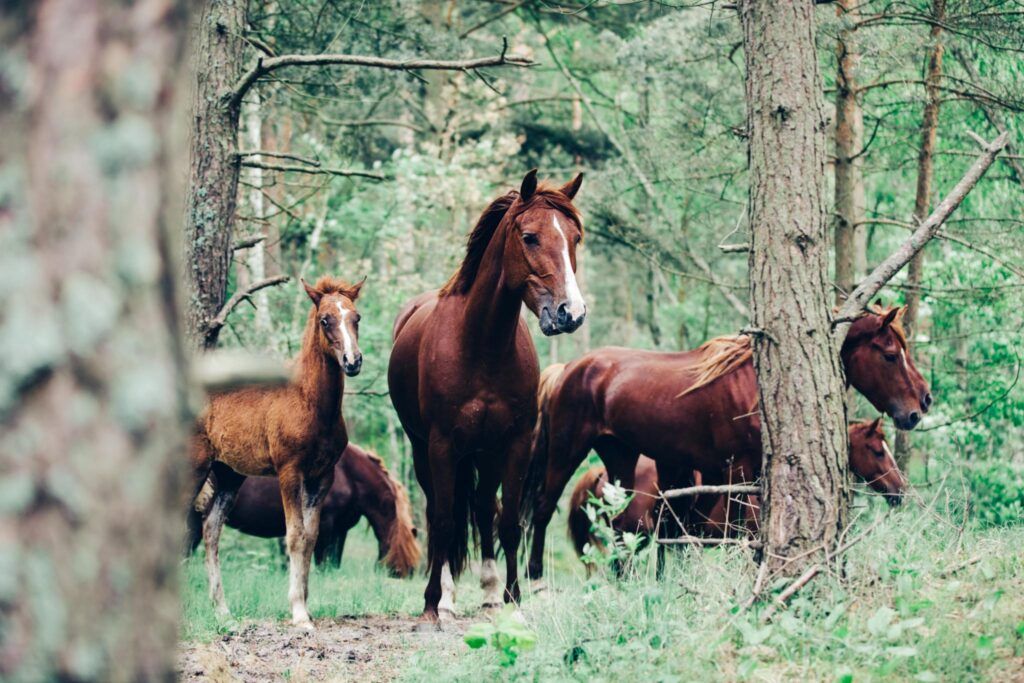
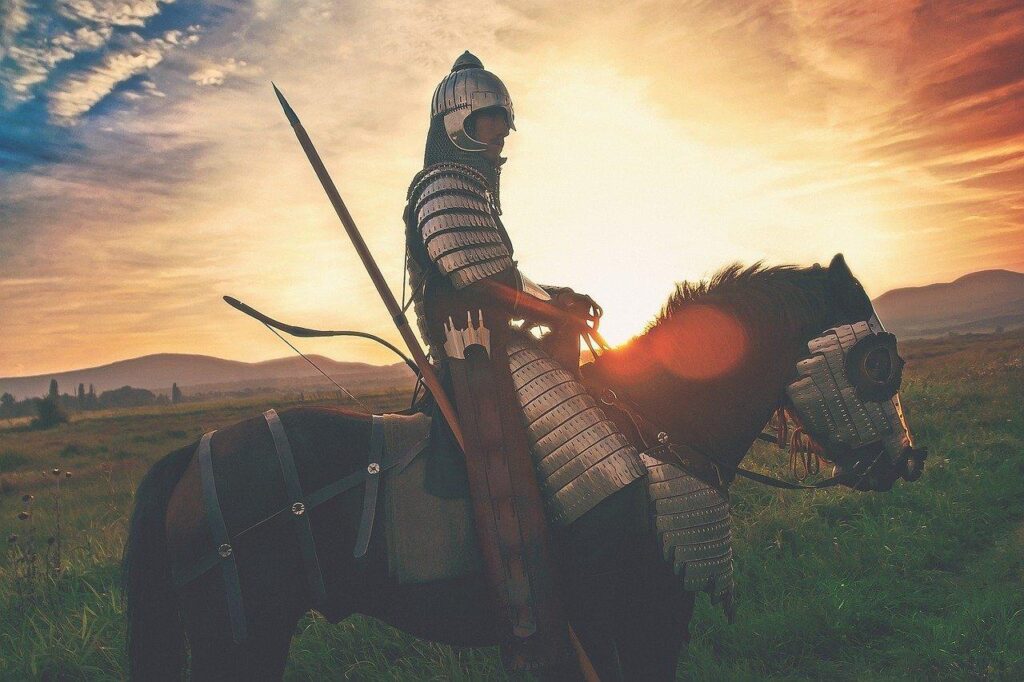
Millennia passed and, with them, eras, until we entered into history proper, when the descendants of those horses returned to the American continent, aboard caravels, suspended in harnesses. The rest is history, a history of war, but also of the enduring and inseparable partnership between horses and men. In the next article in our history column, we will return to take you galloping, to discover horses in other environments and in other, less foggy times. A journey through the history of the construction but also the destruction of civilisations, which made the horse a metaphysical and spiritual icon.

If you have ever walked through the stables or along…

Colic is one of the most common and delicate issues in horse care.

Thanks to its anti-inflammatory, anti-oedemigenous and pain-relieving properties, it is perfect for protecting horses’ osteoarticular well-being.

The use of clay dates back to very ancient times and even today it has not lost its fame as a natural remedy with a thousand uses.

The warm season is upon us and for many riders it is time to take the clipper in hand…

Here we are at our second meeting with our Unika Blog Naturopathy section. I am Sara Maiani, specialized in Natural Medicine, Clinical Phytotherapy and Naturopathy.